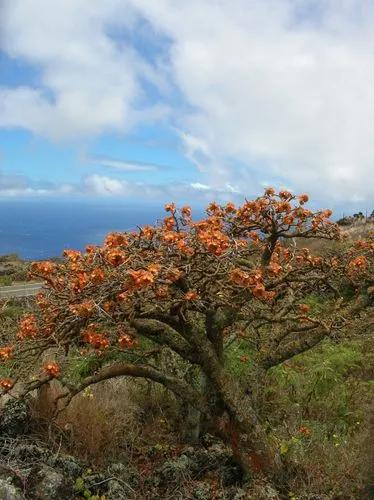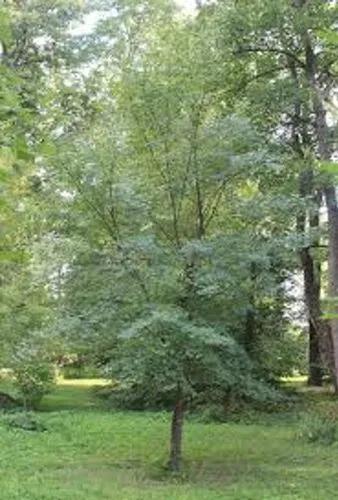Quercus agrifolia, the California live oak coast live oak, or holm oak, is a highly variable, often shrubby evergreen oak tree, a type of live oak, native to the California Floristic Province. It grows west of the Sierra Nevada mountain range from Mendocino County, California, south to northern Baja California in Mexico. It is classified in the red oak section of oaks (Quercus sect. Lobatae).
This species is commonly sympatric with canyon live oak (Q. chrysolepis), and the two may be hard to distinguish because their spinose leaves are superficially similar.
Coast live oak typically has a much-branched trunk and reaches a mature height of 10–25 meters (33–82 ft). Some specimens may attain an age exceeding 1000 years. Examples of this include the Grand Oak of Cherry Valley, California, the Encino Oak Tree, which died in the 1990s (part of the stump has been preserved) and the Pechanga Great Oak.
The trunk, particularly for older individuals, may be highly contorted, massive and gnarled. The crown is broadly rounded and dense, especially when aged 20 to 70 years; in later life the trunk and branches are more well defined and the leaf density lower. The oldest specimens might exceed 20 feet in trunk circumference and 100 feet height.
The leaves are dark green, oval, often convex in shape, 2–7 cm (0.79–2.76 in) long and 1–4 cm (0.39–1.57 in) broad; the leaf margin is spiny-toothed (spinose), with sharp thistly fibers that extend from the lateral leaf veins. The outer layers of leaves are designed for maximum solar absorption, containing two to three layers of photosynthetic cells.
These outer leaves are deemed to be small in size to more efficiently re-radiate the heat gained from solar capture. Shaded leaves are generally broader and thinner, having only a single layer of photosynthetic cells. The convex leaf shape may be useful for interior leaves which depend on capturing reflected light scattered in random directions from the outer canopy.










